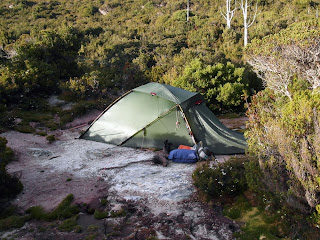ONA Coffee has just opened a new outlet in Civic, the Cupping Room, and it's a must-see for any Canberran or visiting coffee connoisseur.
ONA Coffee has been roasting their own beans in Canberra since 2007. What they lack in an impressive establishment date is more than made up for with the quality of their product. One of only two ACT coffee roasters to win medals in the Sydney Royal Coffee Competition—a category of the Sydney Royal Fine Food Show that was established in 1998—and operating their own bean sourcing programme direct from coffee farmers in India, Central and Southern America, they have a fast-growing reputation for excellence.
Their Fyshwich Coffee House and Roastery has been a favourite cafe of mine since moving to Canberra, despite its distance from my Northside home. I was more than a little excited to hear they were opening a new café in Civic, and not just because it was right next to the university campus where I spend my weekdays.
 |
| Photo courtesy of Jessica Hancock. |
 |
| Exquisite latte art, as always. |
The doors of the stylish new venue on London Circuit opened last Saturday to admit Canberra's coffee lovers and I arrived soon after. On the advice of the Fyshwick staff, I've swapped my usual brew from latte to a flat white and I started off with an Organic Blend flat white. In most cafés, their organic coffee offering has exchanged excellence for its name. Whereas the organic coffee served by ONA has reached such high quality that they now serve it as their house blend, supplanting the already exceptional Malawian Mocha and ONA Signature blends. Hints of dark chocolate and caramel make it a favourite of mine for any milk based coffee.
 |
| Photo courtesy of Jessica Hancock. |
The day was warming quickly and another ONA favourite was soon sampled, their cold drip. Stylishly served to match the mad scientist equipment used to produce it, the cold drip is delivered in an old-fashioned medicine bottle with a similarly old-fashioned label. Lacking even a trace of bitterness, cold drip is an ideal drink for anyone still taking their first baby steps in the coffee world. It also makes an excellent summer beverage for even the most discerning of coffee connoisseurs.
The Cupping Room's coffees lived up to the ONA name admirably, but the new venue has something more on offer that sets it apart. Between the espresso machines and the kitchen is an offering new to Canberra: a bar lined with stools, at which a few unusual coffee offerings are prepared. This is the heart of the Cupping Room, the filter bar, where their pourovers are poured, aeropresses are pressed, cold-drips drip slowly away and freshly roasted beans are cupped.
 |
| ONA founder, Sasa, prepares pourovers at the Cupping Room's filter bar. Photo courtesy of Jessica Hancock. |
 |
| Roaster, Gus, checking the smell of his latest roasts. Photo courtesy of Jessica Hancock. |
Cupping is a scene reminiscent of a wine or whisky tasting, with the anonymous coffees lined up along the bar. The "crust" of coffee grounds is first broken to release the aromas of the mysterious brews and then scooped off. The unfiltered coffee beneath is slurped in a most undignified manner, spreading it evenly across the tongue. From these tests, roasters can check the quality of each batch of beans, pick out the individual flavours and refine the roasting process to match. Customers at the Cupping Room have the chance to take part in the process under the guidance of ONA's expert coffee roasters. We were treated to samples of seven different single origin roasts, including a taste of the rare and intensely aromatic geisha, a legendary coffee varietal that has been breaking world price records since its discovery by the world markets in 2004. I was at a loss to describe its powerful aromas and flavours (were those floral notes? Berries, perhaps plums?) but could appreciate their exquisite combination.
 |
| The Cupping Room's food menu is worth exploring. |
Like ONA's other venues, the Cupping Room provides excellent food to accompany their range of espresso, pourover, aeropress and cold brew coffees. Their new menu is a fusion of flavours inspired by South American cuisine, and their all-day breakfasts boast a few unusual takes on the typical Australian offerings.
 |
| "Not So Benedict" takes eggs benedict, then adds silverside and a mustard sauce. |
 |
| "Dragon Eggs" are avocado halves, filled with mildly spiced guacamole and topped with poached eggs. |
 |
| The banana hotcakes include a hint of salt to offset their sweetness. |
Also check out ONA's video, Cup A Wonderful World. Bonus points for spotting the author of this blog.














